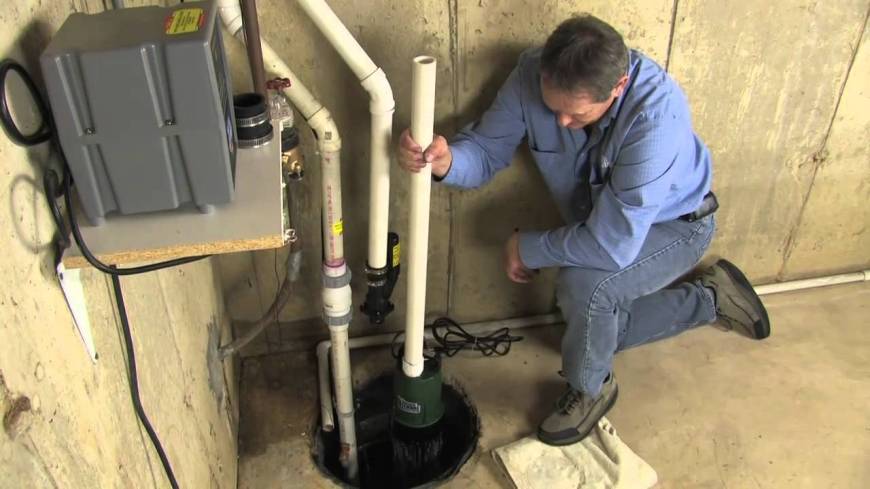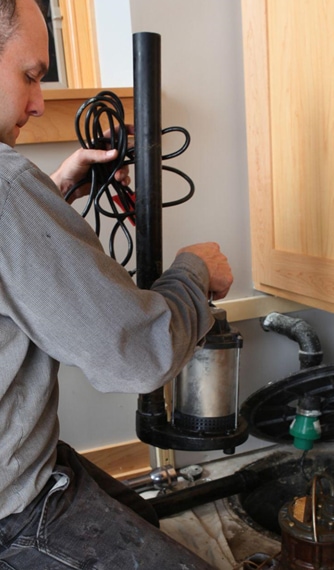Swift Steps to Servicing Your Sump Pump
Swift Steps to Servicing Your Sump Pump
Blog Article
Are you currently interested in tips involving Steps to Cleaning Your Sump Pump Properly?

Sump pumps are crucial elements in several homes, especially in areas vulnerable to flooding or extreme dampness. They assist protect against water damage by successfully eliminating excess water from basements or crawl spaces. However, like any other home appliance, sump pumps call for normal upkeep to ensure they function efficiently when required the most. Cleaning your sump pump is an important part of its maintenance, and understanding just how to do it correctly can conserve you from pricey repairs and prospective disasters.
Intro
Maintaining a clean sump pump is vital for its appropriate functioning and longevity. Neglecting this crucial task can lead to clogs, malfunctions, and inevitably, water damages to your property. As a result, discovering how to clean up a sump pump is critical for house owners who count on these devices to maintain their cellars dry and protected.
Signs of a Dirty Sump Pump
Recognizing when your sump pump needs cleansing is critical for stopping prospective malfunctions. Some typical indicators that suggest an unclean sump pump include odd sounds during operation, minimized water flow, and noticeable debris in the pit. If you observe any one of these symptoms, it's essential to clean your sump pump promptly to avoid any type of further concerns.
Getting ready for Cleaning
Prior to you start cleansing your sump pump, it's important to take some safety and security preventative measures. Start by shutting off the power to the pump to avoid any type of electrical crashes. In addition, put on ideal safety gear, such as gloves and safety glasses, to shield on your own from dirt, debris, and potential virus.
Comprehending the Sump Pump
Before diving right into the cleansing process, it's vital to have a basic understanding of just how a sump pump functions. Commonly mounted in a pit or basin below the basement floor, a sump pump includes several key parts, including a pump, a float button, and a discharge pipeline. When water collects in the pit, the float button triggers the pump, which after that pumps the water out via the discharge pipe, far from the structure's foundation.
Detailed Guide to Cleaning a Sump Pump
Shutting down the Power
Begin by separating the power supply to the sump pump to stop any kind of accidents while cleansing.
Looking For Correct Performance
Prior to re-installing the pump, do a fast examination to guarantee that the float button turns on the pump properly. Pour some water right into the sump pit and observe the pump's procedure. If whatever is operating appropriately, you can reconstruct the pump and reconnect the power supply.
Eliminating Debris and Dirt
Use a pail or an inside story to remove any type of visible particles, dust, or sediment from the sump pit. Dispose of the particles effectively to avoid it from obstructing the pump or the discharge pipe.
Cleansing the Pump and Drift Switch
Once the pit is free from debris, meticulously eliminate the pump from the pit. Inspect the pump and the float switch for any signs of damages or wear. Make use of a soft brush or towel to cleanse the surfaces and eliminate any collected grime.
Flushing the System
After cleaning the pump and float button, purge the sump pit with tidy water to get rid of any kind of remaining dust or sediment. This will certainly help make certain that the pump operates efficiently and successfully.
Upkeep Tips to Keep Your Sump Pump Clean
In addition to periodic cleaning, there are several maintenance tips you can follow to keep your sump pump in optimum condition:
Verdict
Cleaning your sump pump is a crucial aspect of its maintenance and ensures that it operates effectively when you need it the most. By adhering to the steps described in this overview and integrating routine upkeep right into your routine, you can extend the lifespan of your sump pump and safeguard your home from water damages.
6 STEPS ON HOW TO CLEAN A SUMP PUMP PROPERLY
UNDERSTANDING SUMP PUMPS
Your sump pump plays a crucial role in protecting your home by managing and removing excess water. It primarily functions as a “shield”, guarding your basement against the damaging effects of water accumulation. The pump is housed in a sump pit in the lowest part of your basement, and its job is to pump out any water that collects there.
During heavy rainfalls or when snow melts rapidly, water can infiltrate your basement, posing potential risks like flooding, structural damage, and harmful mold growth. Here, the sump pump springs into action, pumping out the intruding water and directing it away from your home.
SAFETY FIRST
Before cleaning, remember to prioritize safety. Disconnect the sump pump from the power source to prevent any accidental electric shocks. Also, wear sturdy gloves to protect your hands from any sharp or dirty components within the pump.
REMOVE THE SUMP PUMP
After ensuring your safety, the next step is to remove the sump pump from its pit. Doing this might require careful maneuvering as you don’t want to damage any pump components. Once removed, clean the sump pit to remove any accumulated debris or sludge.
INSPECT THE PUMP
Inspect the pump for any visible signs of wear or damage. Check the power cord, float switch, and impeller housing. If any components look worn out or damaged, consider replacing them to ensure optimal performance.
CLEAN THE PUMP
Thoroughly clean the pump with warm, soapy water. Make sure to rid it of any dirt, gravel, or other debris that might impede its performance. You can use a toothbrush to clean the small, hard-to-reach parts of the pump.
REINSTALL THE SUMP PUMP
Reinstall the pump into the sump pit Make sure it’s positioned correctly to remove the water effectively Once it’s back in place, reconnect it to the power source TEST THE PUMP
Finally, pour some water into the pit to ensure the pump works correctly. It should start automatically and begin pumping out the water; if it doesn’t, check the power source and the positioning of the pump.
Remember, while cleaning your sump pump is an essential part of home maintenance, hiring a professional plumber for a thorough inspection and cleaning at least once a year is also important. This will ensure that your pump is in optimal condition, ready to protect your home from potential water damage.
BEST PRACTICES FOR CLEANING SUMP PUMP DISCHARGE PIPES
Regular Inspection: Regularly inspect your discharge pipes, especially during heavy rainfall or snowmelt periods. Look for any signs of blockage or damage. Early detection of problems can prevent serious issues down the line. Periodic Cleaning: Over time, sediment and debris can accumulate in the discharge pipes, impeding the flow of water. Regular cleaning helps keep the pipes clear and functioning efficiently. You can use a high-pressure water jet to effectively clean the pipes. Insulation During Winter: In colder climates, discharge pipes can freeze, blocking the outflow of water. Protect your discharge pipes from freezing temperatures by insulating them with foam pipe insulation. This will ensure the sump pump can continue to discharge water even in freezing conditions. Proper Positioning: The discharge pipe should be positioned to direct water away from your home’s foundation. Improper positioning can lead to water seeping back into the basement. Ensure the pipe is long enough and angled correctly. Installation of a Check Valve: A check valve prevents water from flowing back into your sump pit after the pump has pushed it out. Installing a check valve helps maintain the efficiency of your sump pump and reduces the risk of flooding. Minimize Pipe Turns: Every curve or turn in the discharge pipe can decrease the efficiency of water flow. By minimizing turns and bends in your discharge pipe, you can increase the efficiency of your sump pump. https://www.fullspeedplumbing.com/how-to-clean-a-sump-pump-properly9999/

I came across that piece of writing on while looking around the internet. Don't hesitate to take the time to distribute this blog posting if you liked it. Thanks for going through it.
Visit My Website Report this page